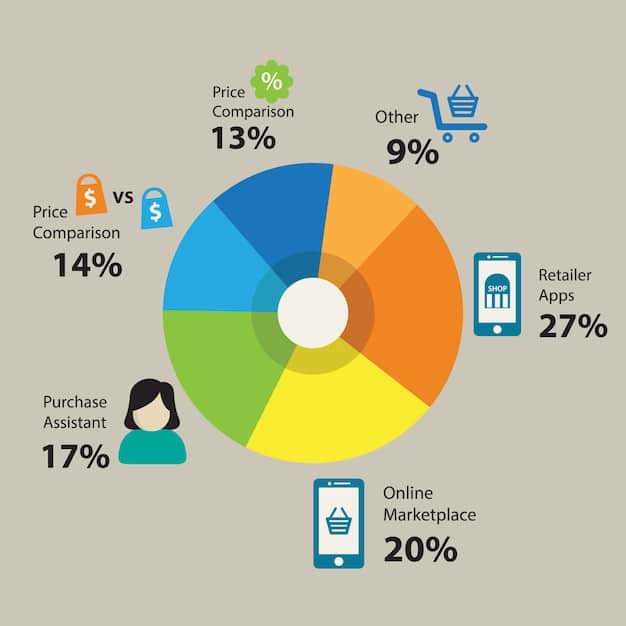E-commerce Video Marketing: Create Videos That Sell

E-commerce video marketing uses video content to attract, engage, and convert online shoppers by showcasing products, building trust, and optimizing for search engines to increase sales and brand visibility.
In today’s digital age, e-commerce video marketing is not just an option; it’s a necessity. Videos can significantly enhance your online store’s ability to attract, engage, and convert customers.
Why E-commerce Video Marketing Matters
Video marketing for e-commerce is critical because it quickly conveys information, boosts engagement, and builds trust with potential customers. In a world where attention spans are shrinking, dynamic video content captures interest more effectively than static images or text.
Through videos, businesses can showcase their products in action, demonstrate their features, and tell compelling brand stories. This approach not only enhances the shopping experience but also significantly influences purchasing decisions.
Enhanced Product Showcasing
Videos provide a dynamic way to showcase products, going beyond static images to highlight features and benefits in real time. This immersive approach helps potential customers better understand the product’s value and utility.
Improved Customer Engagement
Video content is inherently more engaging than text or images, capturing and maintaining viewer attention more effectively. This increased engagement translates into deeper connections with your brand and products.
- Higher Conversion Rates: Studies show that product videos on e-commerce sites can increase conversion rates significantly.
- Increased Time on Site: Engaging video content encourages visitors to spend more time exploring your website.
- Better Brand Recall: Customers are more likely to remember brands that use video marketing effectively.
By integrating video into your e-commerce strategy, you create a richer, more compelling shopping experience that drives results.
Understanding Your Target Audience
Effective e-commerce video marketing begins with a deep understanding of your target audience. Knowing their preferences, behaviors, and pain points allows you to create videos that resonate and drive conversions. What are their interests?
Who are the people you want to attract? Tailoring your content to meet their needs ensures your videos are not only watched but also acted upon, leading to increased sales and customer loyalty.

Consider what demographics you’re trying to reach. By understanding the needs of customers, it helps you make quality video content.
Demographic Analysis
Start by analyzing your existing customer data to identify key demographic trends, such as age, gender, location, and income level. This information provides a foundation for understanding who your videos should target.
Behavioral Insights
Explore your customers’ online behaviors, including their browsing habits, purchase history, and engagement with previous marketing campaigns. This data reveals what motivates them and how they interact with your brand.
- Surveys and Feedback: Gather direct feedback from your customers through surveys and feedback forms.
- Social Media Listening: Monitor social media channels to understand customer sentiment and identify trending topics.
- A/B Testing: Experiment with different video content and formats to see what resonates best with your audience.
With these understandings, you can properly create video marketing that turns viewers into conversions.
Planning Your Video Content Strategy
A well-defined video content strategy is essential for maximizing the impact of your e-commerce video marketing efforts. This strategy should outline your objectives, target audience, content themes, and distribution channels. Make something good, but make something effective.
Having a clear plan ensures your videos are aligned with your overall business goals, driving both brand awareness and sales.
Setting Clear Objectives
Define what you want to achieve with your video content, such as increasing product sales, generating leads, or improving customer engagement. Clear objectives provide a roadmap for your video marketing efforts.
Identifying Key Themes
Determine the core themes and topics that will resonate with your target audience. These themes should align with your brand values and address your customers’ needs and interests.
- Product Demonstrations: Showcase how your products work and highlight their key features and benefits.
- Customer Testimonials: Share positive experiences from satisfied customers to build trust and credibility.
- Behind-the-Scenes: Provide a glimpse into your company culture to humanize your brand and foster connections.
A sound video marketing content strategy will produce a better product for your viewers and increase engagement.
Creating High-Quality Video Content
Producing high-quality video content is crucial for capturing and maintaining your audience’s attention. This involves investing in good equipment, writing compelling scripts, and editing your videos to perfection. It’s more than just pointing a camera.
Well-made videos not only look professional but also communicate your message effectively, leaving a lasting impression on viewers.

Investment in Equipment
Using high-quality video and audio gear will go a long way in the quality of your content. If the video doesn’t look or sound good, why watch?
Compelling Scripts and Storyboards
Crafting well-written scripts and detailed is essential for creating engaging and effective videos. This preparation ensures your videos are focused, concise, and deliver your message clearly.
- Visual Appeal: High-quality visuals capture and maintain viewer attention.
- Audio Clarity: Clear audio ensures your message is easily understood.
- Effective Storytelling: A well-crafted story keeps viewers engaged and invested in your content.
If you invest in the quality of your videos, your viewers are more likely to invest in your company.
Optimizing Videos for E-commerce Platforms
Optimizing your videos for e-commerce platforms is crucial for maximizing their visibility and impact. This includes using relevant keywords, writing compelling descriptions, and adding eye-catching thumbnails. Don’t post without doing some preparation.
Proper optimization ensures your videos rank higher in search results, attracting more viewers and driving more sales.
SEO-Friendly Titles and Descriptions
Optimize your video titles and descriptions with relevant keywords to improve search engine rankings. This helps potential customers find your videos when they’re searching for specific products or information.
Compelling Thumbnails
Create eye-catching thumbnails that accurately represent your video content and entice viewers to click. A well-designed thumbnail can significantly increase your video’s click-through rate.
- Platform Optimization: Tailor your video content to specific e-commerce platforms for optimal performance.
- Mobile Optimization: Ensure your videos are mobile-friendly, as many customers shop on their smartphones.
- Analytics Tracking: Monitor video performance metrics to identify areas for improvement and refine your strategy.
Optimizing your videos for the e-commerce platform can make or break the potential of your videos.
Measuring the Success of Your Video Marketing Efforts
Measuring the success of your e-commerce video marketing efforts is essential for understanding what’s working and what’s not. Tracking key metrics allows you to refine your strategy and maximize your return on investment. How are the views?
Regular analysis ensures your videos are driving the desired results, such as increased sales, lead generation, and customer engagement.
Key Performance Indicators (KPIs)
Identify the key performance indicators (KPIs) that align with your video marketing objectives. These may include view counts, engagement rates, conversion rates, and return on investment (ROI).
Analytics Tools
Utilize analytics tools to track and analyze video performance data. These tools provide insights into how your videos are performing and where you can make improvements.
- A/B Testing: Experiment with different video elements to optimize performance.
- Customer Feedback: Solicit feedback from your customers to understand their preferences and improve content.
- Regular Reporting: Create regular reports to track progress and identify trends.
There is no good video marketing without good analysis.
| Key Element | Brief Description |
|---|---|
| 🎯 Target Audience | Understand their preferences and behaviors to tailor content. |
| 🎥 Video Quality | Use good equipment and editing for a professional look. |
| 📈 Platform Optimization | Use keywords and compelling descriptions to rank higher. |
| 📊 Performance Analysis | Track KPIs to refine your strategy and maximize ROI. |
Frequently Asked Questions
Video marketing enhances product showcasing, improves customer engagement, increases conversion rates, and builds brand trust by demonstrating product features and telling brand stories dynamically.
Start by analyzing existing customer data for demographics, browsing habits, and purchase history. Gather feedback through surveys and monitor social media to understand their preferences and behaviors.
You’ll need a high-resolution camera, quality audio equipment (like a boom microphone), and professional lighting. Editing software will also be essential to polish your videos.
To enhance visibility, use relevant keywords in titles, descriptions, and tags. Create compelling thumbnails, ensure videos are mobile-friendly, and adapt content to specific platforms effectively.
Monitor key metrics such as view counts, engagement rates, conversion rates, and return on investment (ROI). Utilize analytics to track video performance and optimize your marketing strategy effectively.
Conclusion
E-commerce video marketing is a powerful tool for attracting, engaging, and converting customers. By understanding your target audience, creating high-quality content, and optimizing your videos for e-commerce platforms, you can drive significant results for your business. Don’t underestimate the impact that video marketing can have on your growth and sales; be sure to implement the proper strategies!





